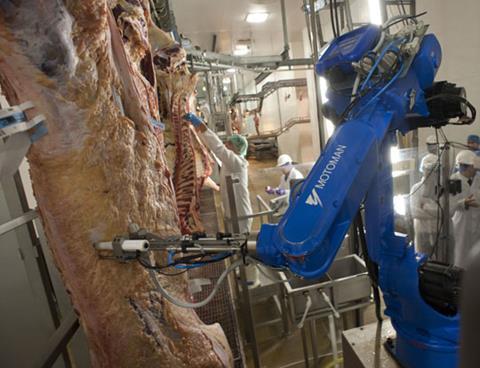A recently-completed research project, jointly funded by the Scottish Government and Quality Meat Scotland (QMS), has established that meat quality measurement techniques and high-tech robotic equipment can successfully be used at line-speed in a commercial abattoir environment.

As well as confirming the potential for the development of future abattoir systems which are less labour-intensive and deliver new information to assist marketing strategies, the findings of the three-year Integrated Measurement of Eating Quality (IMEQ) project have opened the door for the commercialisation of a number of new technologies.
The research project, was delivered by a consortium of partners, led by Scotland’s Rural College (SRUC). The practical trial period of the £950k project was undertaken at Scotbeef’s Bridge of Allan premises which has one of the fastest line speeds in the UK. This phase was completed in summer 2013 and, following several months of collation and interpretation of the data, the full results have now been finalised.
Rural affairs secretary Richard Lochhead said: “It’s critical to the future success and viability of Scotland’s red meat supply chain that our livestock farmers and processors fully embrace all the advantages that new technologies and innovative practices have to offer. The outcomes of this project offer a range of opportunities to keep the Scottish red meat sector in the very vanguard of 21st century meat processing and I am delighted that our funding has delivered such a broad range of science based options to achieve this.”
Jim McLaren, chairman of Quality Meat Scotland, said: “This research project was a major investment by QMS and the Scottish Government to investigate the potential of cutting-edge technology, including the use of robotics similar to those utilised by the high precision motor industry, never before tested in a working abattoir.
“The project has delivered first class results and shown it is possible to create integrated systems to assess carcass and meat eating quality under abattoir conditions. It has also highlighted the scope for imaging technology to allow the industry to move towards a carcase payment system based on yield of superior eating quality meat. It is very important this is accompanied by strong feedback of information on carcass quality to producers.”
Look out for the April issue of Meat Management magazine for more on this development.
This story was originally published on a previous version of the Meat Management website and so there may be some missing images and formatting issues.












